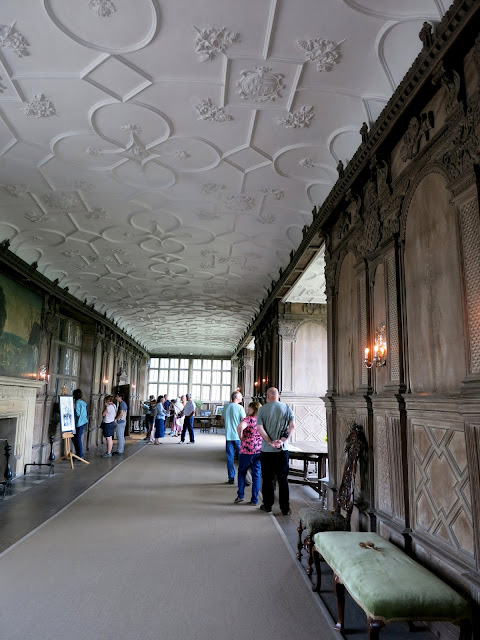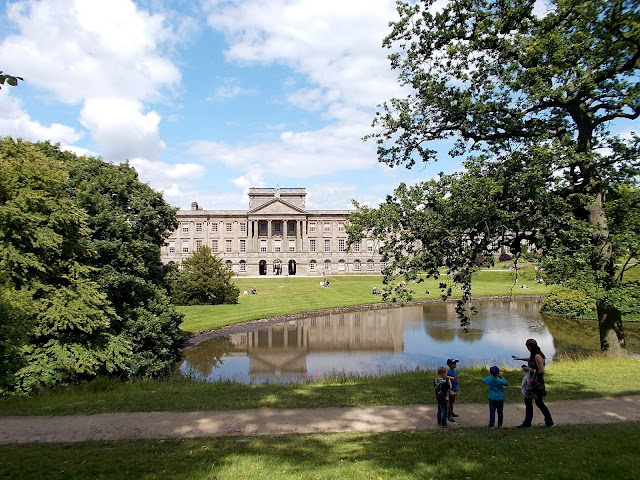Note: It's a little embarrassing to
admit when you have done something foolish--or just plain stupid--because I
knew I should go to the doctor when my symptoms first appeared, but I
didn't--even when the evidence that I should was literally staring me in the
face. I was lucky! But please if you ever experience paralysis, seek immediate
attention. It could save your life.
The morning before we were to leave
Grassington, a Thursday, I looked in the bathroom mirror and noticed something
was not right. One side of my mouth was droopy. When I tried to smile, it was
crooked--the right side would not turn up.
I have a friend who once had Bell's
palsy, so when I saw my paralysis and read online that Bell's palsy was often
associated with herpes simplex I, the virus that causes cold sores, I thought I
knew what had caused it. I had had an earache for days and a cold sore before I
developed the paralysis.
I felt certain that Bell's palsy was
the diagnosis. After all, I don't have high blood pressure or cardiac problems,
I take no prescription medications, and I had no other symptoms. But that was
not a smart assumption. As I discovered later, even the experts can't tell if
it's Bell's palsy or a stroke without a CT and/or MRI scan. Also, if you are having
a stroke caused by a blood clot, you need to get to the hospital quickly to get
the drug that dissolves the clot. But I was in denial. If it had been Kevin, I
would have insisted he go to a doctor, but we were miles from a hospital, and
Ms. Smarty Pants assured her husband that it would be fine to wait.
The next day, when we got to Buxton,
in the Peak District, I went to a doctor's clinic. When I relayed my symptoms
to the nurse, she rushed me in to the doctor. I liked the physician, a woman
who was thorough, professional, and compassionate. She insisted I go
immediately to the hospital and wanted to call an ambulance for me. I demurred,
and said we could go by train. But she countered, "No, I don't want you to
go by train. You can go by taxi, if you like."
So we took a taxi to the hospital in
Stockport about 45 miles away, which cost us the equivalent of $65. (It turns
out if I had chosen the ambulance, it would have been free. But I am glad I
didn't tie up valuable community resources.)
At the hospital, I was examined by
three stroke specialists. I had several vials of blood taken, an EKG and,
finally, a CT scan of the brain. Doctors in the UK do not seem to want to
communicate very much to patients in my experience. While the doctors
reiterated the diagnosis of Bell's palsy, they said nothing about the CT scan
results, and told me I could go. They gave me a prescription for steroids, a
high dose tapering down over 10 days, and one for an antiviral for 5 days. That
was on Friday.
Initially, when I saw the doctor in
Buxton, she said the clinic would charge me, but when I went back on Monday to
pay, I saw a different doctor, a male, who said the clinic would waive the
charge. He also told me that after further review of the CT scan, the hospital
wanted me to come back and have an MRI. I reported that after three days
on the steroids, my paralysis was nearly gone, and he remarked, "That's
another reason to have the MRI. It's not typical for Bell's palsy to respond
that quickly. It usually takes months, and at least two weeks, to get
better." I began to worry that had suffered a stroke or had a brain tumor
or aneurysm.
The doctor told me to call the
hospital MRI department and advised me to get a blood-pressure cuff to check my
blood pressure. (He never told me what my blood-pressure was; he only said it
was "not bad.") He said if my blood pressure shot up, I should go
immediately to a hospital A&E (accident and emergency) room.
Now I was worried. I called the
hospital MRI department, but the receptionist said that the department was
backed up for three weeks. Kevin said to me, "We need to get to the bottom
of this," so I found an imaging center in London that would do the MRI for
250 pounds (about $391) a few days later.
My one piece of good luck was getting
in touch with a medical secretary at the hospital who began to look out for me.
I explained the situation to her over the phone, and asked to get my records
faxed to London. She tried that, but on Wednesday, by the time I had it
all arranged, the hospital got back in touch and said they could do the MRI at
8:30 a.m. on Sunday.
I cancelled the London appointment
and continued to take my blood pressure, which was a little on the high side
(about 140/80), but nothing scary. In the meantime, I didn't feel too bad,
mostly just more tired than usual.
On Sunday, now more than a week
since I had first been examined, I returned to the hospital for the scan. The
next day I called the medical secretary, who began to call the MRI department
on my behalf. I waited two more days and called back, but the secretary
told me she had not been able to get the report from the MRI department.
Finally, on Thursday, I got the
news: everything on the MRI scan of my brain was completely normal! The medical
secretary tried to fax the results to my doctor at home, but her fax machine
would not let her send it overseas. So she emailed it to me, and I emailed the
report to my doctor, who said that looked good to her too.
What a tense couple of weeks! But
all's well that ends well. Amazingly, the exams, blood tests, EKG, CT
scan, MR and medications--cost me exactly $0! In the UK, even today,
everyone, citizen or not, is entitled to free emergency care at hospitals on an
outpatient basis.
I also found out that immediate
medical attention is not only advisable in case of stroke, but with Bell's
palsy, you need to start on steroids and antivirals within 72 hours of the
onset of paralysis to help ensure the best outcome. As for me, I was one
of the lucky ones. I recovered from all my symptoms within two weeks.
(Photo of hospital provided by
Stockport NHS Foundation via Wikimedia Commons.)

















































